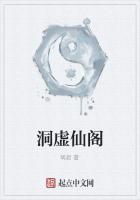Howe landed in New York with a few cents in his pocket and immediately found work.But his wife was dying from the hardships she had suffered, due to stark poverty.At her funeral, Howe wore borrowed clothes, for his only suit was the one he wore in the shop.
Then, soon after his wife had died, Howe's invention came into its own.It transpired presently that sewing machines were being made and sold and that these machines were using the principles covered by Howe's patent.Howe found an ally in George W.Bliss, a man of means, who had faith in the machine and who bought out Fisher's interest and proceeded to prosecute infringers.
Meanwhile Howe went on making machines--he produced fourteen in New York during 1850--and never lost an opportunity to show the merits of the invention which was being advertised and brought to notice by the activities of some of the infringers, particularly by Isaac M.Singer, the best business man of them all.Singer had joined hands with Walter Hunt and Hunt had tried to patent the machine which he had abandoned nearly twenty years before.
The suits dragged on until 1854, when the case was decisively settled in Howe's favor.His patent was declared basic, and all the makers of sewing machines must pay him a royalty of twenty-five dollars on every machine.So Howe woke one morning to find himself enjoying a large income, which in time rose as high as four thousand dollars a week, and he died in 1867 a rich man.
Though the basic nature of Howe's patent was recognized, his machine was only a rough beginning.Improvements followed, one after another, until the sewing machine bore little resemblance to Howe's original.John Bachelder introduced the horizontal table upon which to lay the work.Through an opening in the table, tiny spikes in an endless belt projected and pushed the work for ward continuously.Allan B.Wilson devised a rotary hook carrying a bobbin to do the work of the shuttle, and also the small serrated bar which pops up through the table near the needle, moves forward a tiny space, carrying the cloth with it, drops down just below the upper surface of the table, and returns to its starting point, to repeat over and over again this series of motions.This simple device brought its owner a fortune.Isaac M.Singer, destined to be the dominant figure of the industry, patented in 1851 a machine stronger than any of the others and with several valuable features, notably the vertical presser foot held down by a spring; and Singer was the first to adopt the treadle, leaving both hands of the operator free to manage the work.His machine was good, but, rather than its surpassing merits, it was his wonderful business ability that made the name of Singer a household word.














